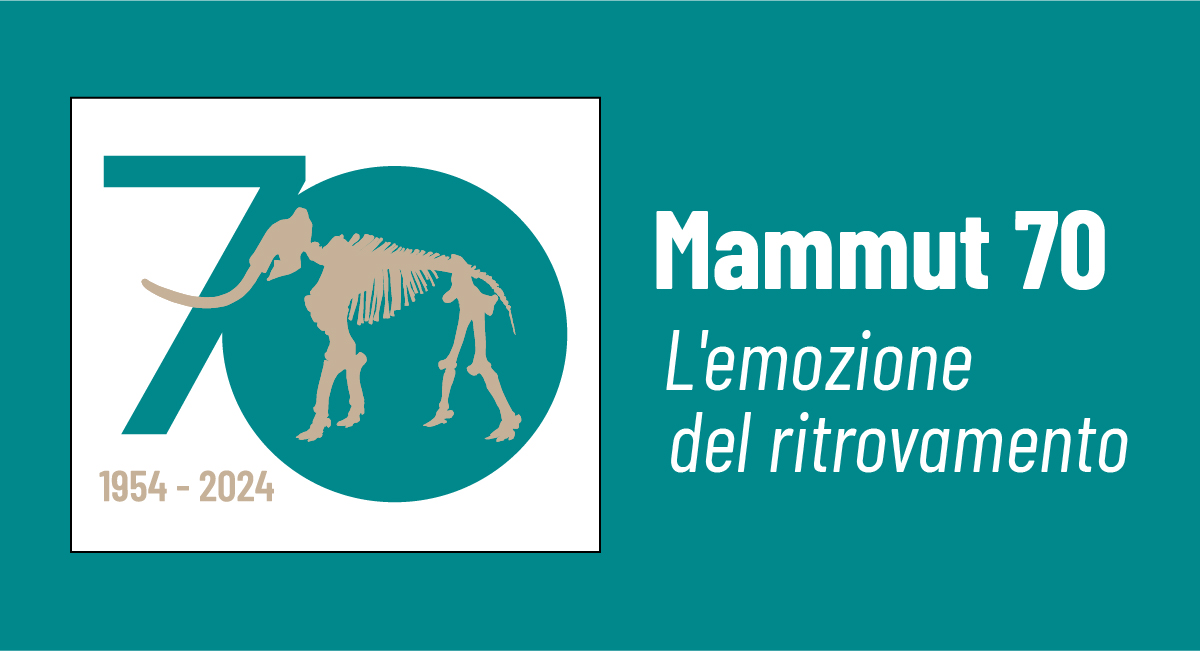
Mammoth 70
The emotion of Discovery
It all began on March 17, 1954, when the Anonima Materiali Argillosi notified the Superintendence for Antiquities of Abruzzo and Molise of the discovery of a fossilized elephant in its quarry. An unpublished document found in the SABAP archive for the provinces of L’Aquila and Teramo necessitates a revision of the discovery date of the Mammoth skeleton by the furnace workers who, while drilling the ground in search of water at less than a meter deep, under a layer of clay and sand, found its first remains. On the occasion of the 70th anniversary of its discovery, the National Museum of Abruzzo will promote a series of initiatives that will accompany us throughout 2024, marked by the logo specially designed by Francesca Condò.
A small documentary exhibition takes us through the stages of the fossil discovery, from excavation to recovery and display in the eastern bastion, through the “voices” of the protagonists.
The National Museum of Abruzzo has been awarded by the regional committee of the Italian Paleontological Society with the plaque of recognition for the Regional Fossils 2023 award, an initiative aimed at promoting the dissemination and knowledge of the riches of the Italian paleontological heritage.
The visit will be made more dynamic thanks to AR core technology, which allows the Mammoth to be visualized in the fascinating forms it had when it was alive.
In collaboration with the Academy of Fine Arts of L’Aquila, 3D prototypes of the Mammoth and its skull will be created to make the eastern bastion hall of the sixteenth-century castle accessible to visually impaired users.
Throughout the year, a philatelic cancellation dedicated to the event will be available for philately enthusiasts, making the 70th celebrations even more special. In the autumn months, a national scientific conference entitled “The Mammoth of the Castle – seventy years since its discovery.
New data in the context of the environmental evolution of the Pleistocene” will be held, during which the results obtained on the specimen through new investigative methodologies and recent restoration will be reported.

